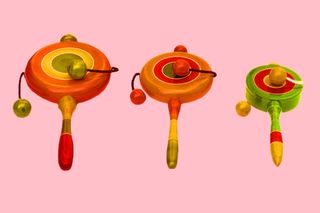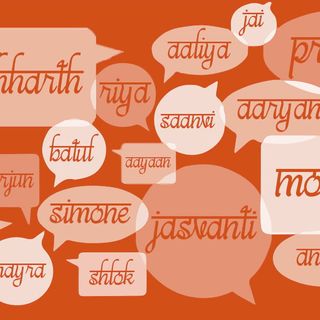
The Makers of the Best Kids’ Toys Are The Ones Going Out of Business
Traditional Indian wooden toys are being supplanted by devices.

The market for traditional, Indian wooden toys is dying.
“From 200-odd families making and selling Chitrakoot toys and handicraft, the number of families who depend solely on this art form to sustain themselves has come down to about 30,” writes Jigyasa Mishra for Village Square (recently republished on Scroll).
The artisans of Chitrakoot, a former hub of manufacturing for India’s once-popular wooden toys — tops, skipping ropes, dumroos, and more — have fallen on hard times, as have their brethren in various other towns and cities in Uttar Pradesh. Demand for their simple, brightly colored playthings has fallen sharply, as families favor flashier toys and devices that have the trappings of modernity. At the same time, the subsidized supply of raw material isn’t even enough to meet what demand remains, typically from tourists and festival-goers, driving up costs for toy makers even as revenue dwindles.
Yet, the simple toys made by Bhagvati and his fellow artisans are among the best kind of toys children can have. Up until age 7, children learn best through play and exploration, and toys are the first tools in this endeavor. Simple toys are the best tools; the more a toy does, the less a child does — and the less a child learns.
“Battery-operated toys tend to do the ‘work’ of play for children; rather, they don’t challenge children in any way, and thus don’t help them develop,” Ashwini Vaishampayan has written for The Swaddle.
By contrast, simpler toys put the onus of operation on kids. The toys don’t entertain the child: Rather, kids entertain themselves by discovering new and different ways to use the same toy, which fosters skills ranging from creativity to understanding cause and effect.
Quite understandably, the obstacles Chitrakoot toy makers face have turned off the younger generation from taking up the trade.
“Watching Bhagvati struggle to earn a reasonable income, his three wards are not willing to carry the tradition forward. According to them, Chitrakoot toys are a good-for-nothing craft. Raja, the elder son is pursuing his bachelor’s degree in electronic engineering. He looks forward to moving to a city for better job opportunities,” Mishra writes.
But it is a sad irony that, as the younger generation of might-have-been toymakers leave the business to pursue further study and better jobs, the very kinds of toys that best prepare kids for academic achievement are disappearing.
Related:
Liesl Goecker is The Swaddle's managing editor.
Related


The Buzz Cut: Cardi B Makes An Announcement
